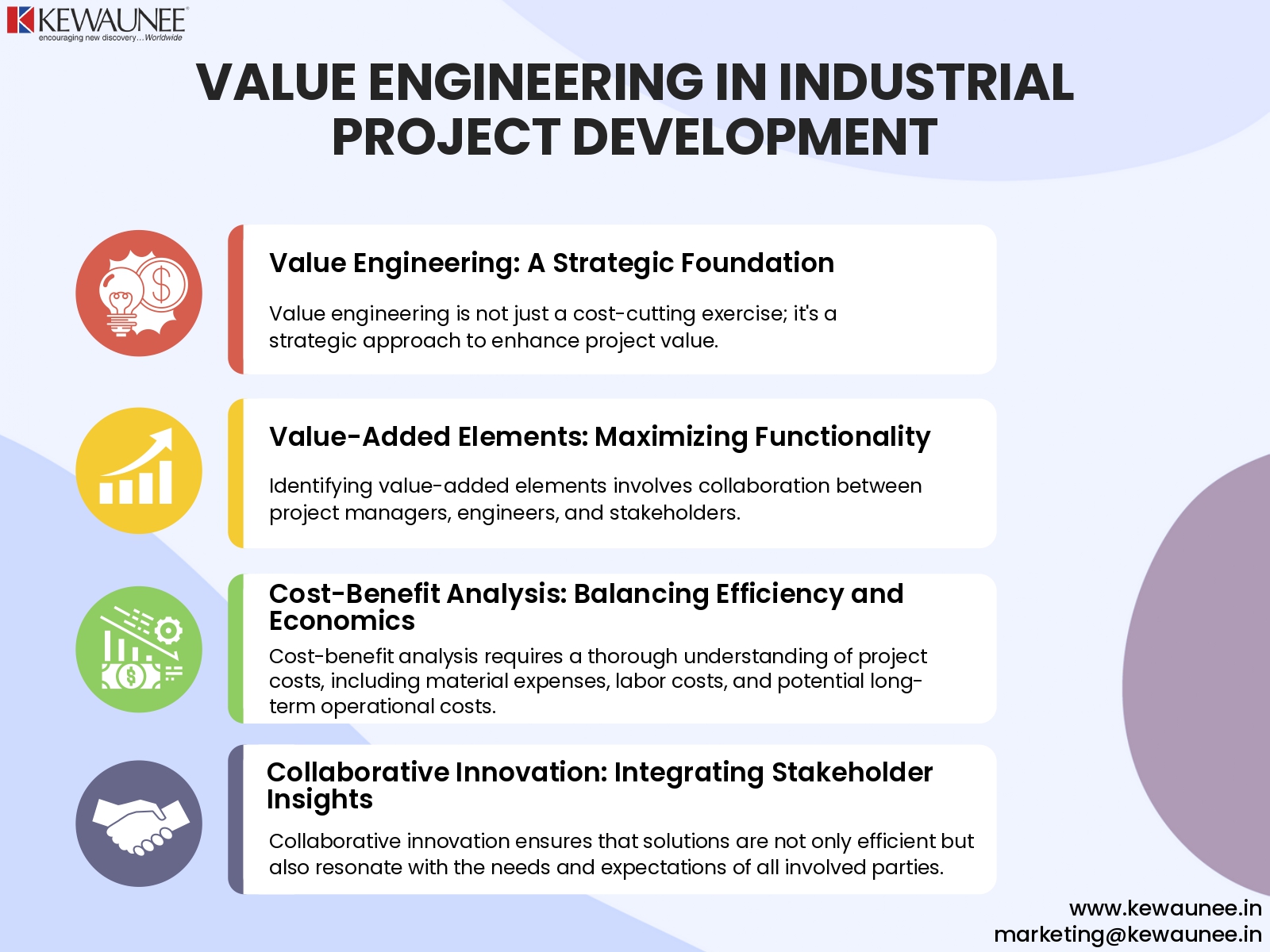The Power of Value Engineering in Industrial Project Development
Efficiency is the heartbeat of successful industrial projects, and value engineering emerges as the key to unlock its full potential.
This blog delves into the transformative power of value engineering in industrial project development, unveiling the strategies and principles that drive efficiency and optimize outcomes.
1. Decoding Value Engineering: A Strategic Foundation
Value engineering is not just a cost-cutting exercise; it’s a strategic approach to enhance project value. In essence, value engineering involves scrutinizing every project element to ensure it contributes maximum value at the lowest possible cost. Decoding value engineering is about fostering a mindset that seeks innovative and efficient solutions without compromising project integrity.
The process begins with a comprehensive analysis of project elements, including materials, processes, and functionalities. The goal is to identify opportunities for improvement and optimization. Value engineering aims to achieve the highest functionality, quality, and performance while minimizing costs, making it a holistic approach to project development.
2. Identifying Value-Added Elements: Maximizing Functionality
Value engineering emphasizes the identification and maximization of value-added elements within a project. By focusing on these core elements, value engineering ensures that resources are allocated to areas that truly matter.
Identifying value-added elements involves collaboration between project managers, engineers, and stakeholders. It requires a deep understanding of project goals and customer expectations. By prioritizing functionality, value engineering aligns project development with the core objectives, setting the stage for optimized outcomes.
3. Cost-Benefit Analysis: Balancing Efficiency and Economics
Efficiency should not come at the expense of economic viability. It involves assessing the costs associated with various project elements against the benefits they deliver. Balancing efficiency and economics ensures that every enhancement aligns with the project’s financial constraints while maximizing overall value.
Cost-benefit analysis requires a thorough understanding of project costs, including material expenses, labor costs, and potential long-term operational costs. By weighing these against the benefits, project teams can make informed decisions about where to invest resources for the greatest impact. This strategic approach ensures that value engineering remains a powerful tool for efficiency without jeopardizing financial prudence.
4. Collaborative Innovation: Integrating Stakeholder Insights
Value engineering thrives on collaboration and innovation. Engaging with architects, engineers, end-users, and other stakeholders brings diverse perspectives to the value engineering process. Collaborative innovation ensures that solutions are not only efficient but also resonate with the needs and expectations of all involved parties.
Collaboration involves open communication channels and a willingness to explore unconventional ideas. Stakeholder insights provide valuable input into the identification of value-added elements and the decision-making process during cost-benefit analysis. The result is a more holistic and well-informed approach to value engineering, fostering a culture of continuous improvement.
Summary
Value engineering stands as a cornerstone in unlocking efficiency in industrial project development. From decoding its strategic foundation to identifying value-added elements, performing cost-benefit analysis, and fostering collaborative innovation, this approach ensures that projects not only meet but exceed expectations.
By embracing the principles of value engineering, industrial projects can navigate challenges, optimize resources, and ultimately unlock the full potential of efficiency in project development.
Comments are closed.











